Browse Exhibits (23 total)
George Whitefield and the Creation of the Bethesda Orphan House
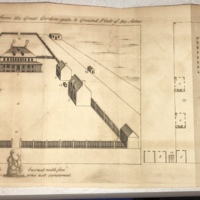
Most know George Whitefield as a well known evangelist during the time of Great Awakening. However, many forget of one of his greatest contributions to the colony of Georgia at the time, the Bethesda Orphan House. Using the UGA Special COllections Library and the UGA library, this exhibit investigates George Whitefield and his creation of the Bethesda Orphan House. Historians have many questions and doubts about the motives behind this controversial contribution, but regardless, it is clear that Whitefield had a passion for this project and his mission to spread Christianity throughout the early colonies.
George Whitefield: Bethesda
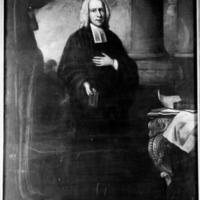
A collection of the hitory of the Bethesda orphan house and George Whitefield's endeavors and purpose in its establishment.
Spurred by strong religious conviction and disheartening observations of the state of the poor in Georgia, George Whitefield felt compelled to fund and establish an Orphan House in the mid 1700's to provide aid and religious teaching to orphans in the colony. His efforts were largely unsupported by the church, so Whitefield was forced to use his influence in his sermons and social spheres to generate support and sufficient funds to establish the orphanage.
Rachel Killian, Chandler Shepherd, Jordan Herrell
History of UGA
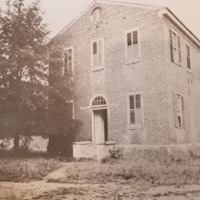
Introduction
This exhibit vividly depicts the history of the University of Georgia (UGA). This exhibit includes information pertaining to UGA's culture, establishment, early development, and atmosphere. The pages included are supported and furthered through the inclusion of multiple archival items and secondary sources. The research topic of the history of the University is one of great value, as many current students do not know the true beginnings of the college they are attending. The exhibit is composed in Omeka, an online mapping software that is able to successfully turn images, items, and other archival sources into more of a digital story that is easily organized and navigated.
How technology advanced the Civil War
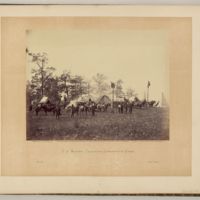
This exhibit explores how technologies advanced the Civil War. Items such as weapons, telegraphs, submarines, railroads, and bridges are analyzed for their impact on the war. The North and South are compared according to their technological use and this exhibit explains how and why the North won this war with its new technologies.
New York City Subways

New York City’s current population is 8.6 million people, and that does not include the 62.8 million tourists that visit every year. In order to transport such an enormous amount of people through a very congested and busy city, a form of mass transportation is required. Explore parts of the New York City subway and identify key factors in its growth, influence, and overall impact. In 1894 William Lafayette Strong, the mayor of New York City, created a bill granting 40,000,000 dollars towards the creation of the New York Subway System. The subway system is an underground metro that allows for transportation and movement underneath a city. Ten years later in 1904 with 28 stations and 9.1 miles in track the subway was ready for its big debut. The NYC subway system now contains 468 stations and 669 miles of track and serves 5 million people a day, and 1.6 billion a year. The subway is currently run by the Metropolitan Transportation Authority and it runs through Manhattan, Brooklyn, Bronx, Queens, and parts of Long Island. Many aspects have led to bringing the subway to its current stance in society including its downfalls as well as its evolution and successes. The exponential influx of New York’s diverse population from 1904 to present day was an integral part in shaping the New York subway system, providing an efficient mode of transportation allowing the city and its people to thrive.
Perspectives of the Past
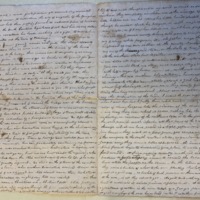
This exhibit looks at Savannah, Georgia, throughout three major time periods from different perspectives. Beginning with the Antebellum Period, a letter from a young woman to her father describes the south as seen by a northerner. During the Civil War, General Sherman is seen traversing through Georgia on his March to the Sea. After the war, Savannah enters Reconstruction, as looked at through a government perspective in terms of city mapping and land ownership. Through these varying perspectives of three different time periods, a more knowledgeable mindset can be taken on when looking at Savannah, Georgia today.
Salem Witch Trials
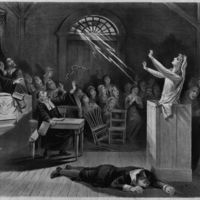
Few events in American history were as strange and unjustified as the seventeenth century Salem Witch Trials. After exploring the circumstances surrounding the trials, we concluded that the hysteria stemmed from a social discrimination of women and outcasts fueled by the superstitious Puritan ideology at the time. From February 1692 through September 1693, hundreds of accused witches were killed, the majority of which were servants, debtors, slaves, or elderly and unwanted (Brandt). These trials and executions were supported by an unfair legal system that was based on spectral evidence and social status. While the trials seem completely ridiculous from a modern point of view, an analysis of the social climate of seventeenth century Massachusetts brings light to how the Salem Witch Trials occurred. Through our collection of items, we hope to illustrate the social, legal, and monumental aspects of this unusual event that has branded Salem, Massachusetts. The social climate of Salem, Massachusetts was characterized by strict adherence to Puritan beliefs and superstitions. Their widespread use of witchcraft to explain anything strange or uncustomary led to the unfair trials. With no way of presenting concrete evidence, the accused witches were charged on account of spectral evidence, leading to the execution of the innocent. By combining sources from the seventeenth century with modern day research, we were able to analyze an unusual colonial event with a modern, progressive lens.
Slavery in Georgia
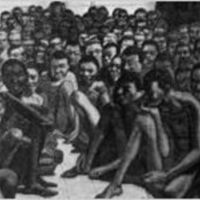
In a time period when slavery was prominent in many of the American colonies, Georgia had surprisingly opposed the enslavement of Africans. However, slavery was not prohibited due to the moral principles of the Trustees of Georgia, but its clash with Georgia’s social and economic intentions. The Georgia Trustees banned slavery as it differed with the vision of the landowners prospering from their own hard work. However, slavery in Georgia finally emerged in 1751, since the lure of wealth that would be incurred by the colony proved too tempting.
This exhibit discussses the archival items corresponding to the evolution of slavery and slavery's impact on modern times. The exhibit contains various archival items further discussing the details of slavery.
The History of AIDS in the United States of America

This exhibit covers the spread, politics, media coverage, and prevention of AIDS/HIV in America. In the United States, there is a strong misconception revolving around the transmission of HIV/AIDS. This misconception dates back to the 80's when the disease was thought to be a rare type of cancer and eventually became a "homosexual plague" after the large spread among the LGBT+ community. This misunderstanding created not only a fear of specific minority groups but a fear of transmitting the disease itself. Recently, many health groups have sought to better educate younger students and adults about the disease to not only help prevent a further spread of HIV/AIDS but to lessen the misconceptions surrounding the disease. Hopefully, through this presentation, we can provide the same assurances.
Thebes Necropolis

One of the most monumental and oldest cities to ever existed was Thebes, Egypt. It is believed that ancient Thebes was constructed circa 1500 B.C. containing over thousands of years of history within its lands. Through the progression of time, the city grew over itself, broke away from its foundations, and is now lost to the modern world. All that is resting over of the remains of Thebes is now called Luxor. Thebes, a lost city, a necropolis site, gives archaeologists an idea of what life was like for ancient Thebans. All that's left of the original city were tombs and artifacts left for the deceased. Some items excavated by archeologists are shown in our exhibit help reveal the history of Thebes.